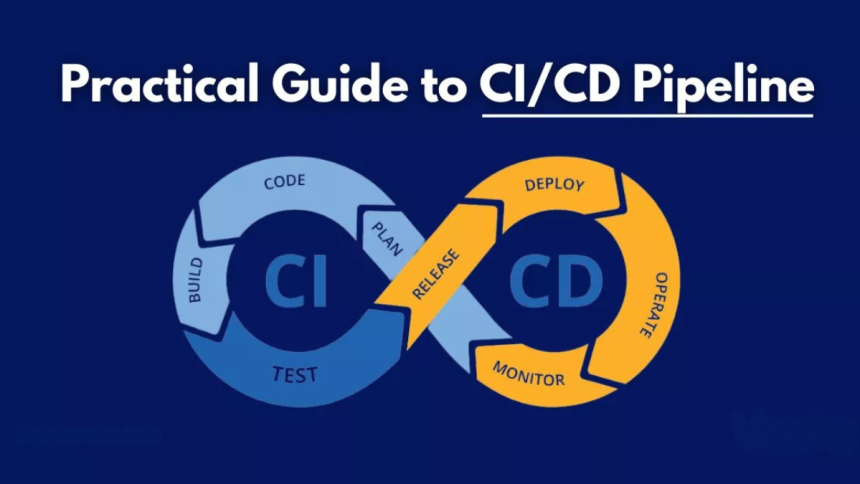In the world of fast-paced software development, organizations need to automate and be efficient enough to deliver quality applications at speed. Here, CI/CD (Continuous Integration and Continuous Deployment) pipelines are critical for the success of this transformation. Build pipelines — automate your build, test, and deployment process to accelerate the software delivery lifecycle. Not only this, but CI tools also allow teams to identify and fix bugs in the early stages, with which they can deliver faster, ultimately reducing the system issues and improving reliability.
This guide discusses the basics of CI/CD pipelines, CI tools, best practices, and the advantages of adopting CI/CD methodologies in contemporary software development.
Understanding CI/CD Pipelines
An automated sequence of stages that enable continuous integration and continuous deployment This lets developers make code changes often without breaking the previously running application.
- Continuous Integration (CI): Developers push code changes to a shared code repository regularly, where each change gets validated by an automated build and test. Write tests to detect and prevent bugs early in the stage of development.
- Continuous Deployment (CD): After the code change passes all the automated tests, it is deployed automatically to production or a staging environment. This allows applications to always remain in a pen-deployable state.
- Continuous Delivery: This falls in between CI and CD, where there is automated testing and code preparation but no deployment until manually approved by some operator.
Key Stages of a CI/CD Pipeline
1. Code Commit and Version Control: Developers write and commit code to a version control system such as Git, which tracks changes and maintains code history. This ensures collaboration and prevents code conflicts.
2. Automated Build Process: The code is compiled into an executable format. This stage ensures that the new changes integrate smoothly with the existing codebase. The build process may include compiling code, resolving dependencies, and generating artifacts.
3. Storing/Managing Artifacts: The newly built application is stored in an artifact repository to be fetched for deployment easily. Some examples of popular artifact repositories are JFrog Artifactory, Nexus Repository, and AWS CodeArtifact.
4. Staging/Production Deployment: The application is deployed to a staging or production environment following specific deployment strategies like blue-green, canary, or rolling deployment. Deployment automation works towards limiting manual intervention, which helps eliminate human errors.
5. Monitoring and Feedback: The deployed application constantly monitors performance, security, and operational issues, ensuring that teams iterate and improve based on live feedback. Tools like Prometheus, New Relic, and Datadog for application monitoring help track the system’s health and performance.
Popular CI Tools for CI/CD Pipelines
Several tools help automate the CI/CD pipeline, making managing and optimizing software delivery easier. Some of the most popular CI tools include:
- ACCELQ: It is a prominent AI-driven codeless automation platform for effortless end-to-end test automation across all web, mobile, API, and backend applications. It smoothly integrates with CI/CD pipelines, allowing ongoing, intelligent automation testing.
- Jenkins: An open-source automation server with extensive plugin support, enabling integration with multiple tools. Jenkins provides a flexible framework for defining complex CI/CD workflows.
- GitHub Actions: Provides native CI/CD capabilities within GitHub, simplifying automation workflows for repositories hosted on GitHub.
- GitLab CI/CD: GitLab’s CI/CD tool, integrated (already) with GitLab, provides a seamless way to enable continuous integration and deployment with robust version control features.
- CircleCI: CircleCI is a cloud-based CI/CD service that enrolls code changes, automates builds and tests, and allows the software to reach the market faster.
- Travis CI: A project for testing GitHub projects automatically.
- Azure DevOps: Microsoft’s integrated toolchain with CI/CD and collaboration features for development teams, with scaling options for large enterprises.
- Bamboo: A continuous integration and continuous deployment (CI/CD) tool that deeply integrates with Jira and Bitbucket, allowing for seamless application development and testing.
- TeamCity: Supports extensive customization, allows parallel execution, and supports various programming languages.
Benefits of Implementing CI/CD Pipelines
1. Accelerated Time-to-Market: Automation of the software development lifecycle greatly decreases the time to deliver new features and bug fixes, allowing teams to innovate instead of spending time on manual tasks.
2. Enhanced Code Quality: Regular integration and testing enable earlier detection of issues, minimizing the chance of defects making their way to production. Everyone who writes code is subject to review, and static analysis further ensures quality assurance.
3. Better Teamwork: The CI/CD pipelines promote collaboration between developers, testers, and operations teams. A simple, streamlined, and organized workflow will produce more effective team collaboration.
4. Lower Deployment Risks: Incremental updates make sure that your deployments are stable, which reduces downtime and rollback. Mitigating risk with deployment strategies like blue-green and canary releases.
5. Scalability and Flexibility Organizations can scale CI/CD practices as project demands grow and integrate with cloud-based infrastructure for additional flexibility. Present CI/CD tools allow for hybrid and multi-cloud deployments.
6. Security and Compliance: Security is tested on the CI/CD pipeline to comply with regulations in the industry. Some of these are Snyk, SonarQube, OWASP ZAP, etc, which let you start the catching process from the beginning.
As the world of software development evolves, we must update our CI/CD pipelines to integrate trends like AI-powered testing, microservices, serverless architecture, etc. It is important to keep learning and evolving to have a great pipeline. Teams should explore new tools and methodologies to stay ahead of industry advancements while ensuring stability and security.
Best Practices for CI/CD Success
- Adopt a Modular Approach: Design pipelines to be modular, allowing different stages to function independently for better scalability. Modular pipelines enable easy debugging and maintenance.
- Enforce Code Reviews: Require that code reviews be performed by existing team members before merging code back into the project. The quality of code increases and errors decrease.
- Implement Infrastructure as Code (IaC): Ensure consistent environment setup for every deployment by automating environment provisioning through AI tools like Terraform and Ansible. It minimizes configuration drift and deployment failures.
- Implement Security Scanning: Integrate security testing within the CI/CD pipeline to identify vulnerabilities early. Static and dynamic application security testing tools should be part of the workflow.
- Monitor and Optimize Pipelines: Regularly track performance metrics, optimize build times, and refine workflows for efficiency. Observability and logging tools provide insights into CI/CD health.
- Ensure Rollback Mechanisms: Implement rollback strategies to revert to a stable version in case of failure. Automated rollbacks improve system resilience and reduce downtime.
Conclusion
CI/CD pipelines and CI tools have brought new heights with automation, efficiency, and reliability in modern software development. However, organizations can streamline their software delivery lifecycle using a strong CI/CD pipeline, which ensures better collaboration and quality applications. With the right CI tools and adopting best practices, teams can continuously innovate with less risk and less tech debt.
ACCELQ and other modern CI/CD tools play a pivotal role in making automated testing seamless within CI/CD pipelines, ensuring software quality at every stage of development. Continuous integration and continuous deployment (CI/CD) are vital for all companies, startups, and enterprises to remain competitive in the agile software era. CI/CD Pipelines that work properly—fully implemented CI/CD pipelines—turn faster, reliable, and secured software delivery into operational excellence.
Lynn Martelli is an editor at Readability. She received her MFA in Creative Writing from Antioch University and has worked as an editor for over 10 years. Lynn has edited a wide variety of books, including fiction, non-fiction, memoirs, and more. In her free time, Lynn enjoys reading, writing, and spending time with her family and friends.















